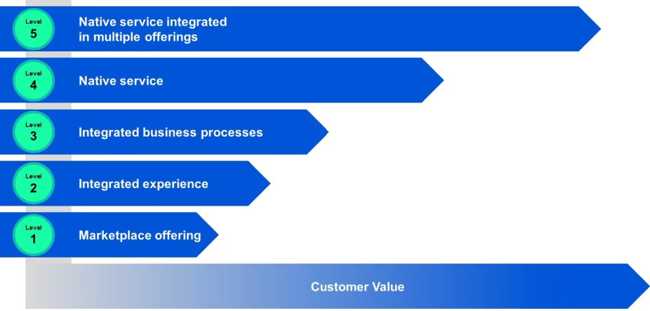First Cloud-Based Storage Solutions from NetApp Back in 2014
Since then, 1,000s of engineers have been innovating with the hyperscalers, releasing features and capabilities.
This is a Press Release edited by StorageNewsletter.com on August 31, 2023 at 2:01 pmBy Ronen Schwartz, SVP and GM, cloud volumes business, NetApp, Inc.
NetApp, Inc. shipped its first cloud-based storage solutions back in 2014. Since then, 1,000s of NetApp engineers have been innovating with the hyperscalers, releasing features and capabilities, and driving enterprise maturity and cloud scale into our cloud storage offerings, moving them far up the cloud maturity model.
Why is this important?
Several other storage vendors claim to be delivering a first-party offering with the hyperscalers. And although we applaud them for recognizing the need for customers to have strong on-premises flash storage and hybrid multicloud storage solutions, we want to be clear what a customer needs from first-party cloud storage. With cloud storage integrations accelerating, it’s important to foster a conceptual framework that helps storage users understand that ‘being in the cloud’ is not a binary scenario. Levels of integration, service, scale, billing, and multicloud availability make a difference to the benefit and value gained from a cloud storage or data service offering.
With that in mind, there’s a detailed maturity model of benefits from hyperscaler integration. More customer value is added at each level. It’s not easy or quick for a storage vendor to move their offering from one level to the next. NetApp has innovated collaboratively with the hyperscalers for nearly a decade. We co-engineered ‘level 4’ offerings and together we offer the first ‘level 5’ cloud storage solutions.
In the chart below on ‘Levels of hyperscaler integration,’ a level 1 ‘Marketplace offering’ is a third-party solution available in a hyperscaler’s Marketplace. Level 2 ‘Integrated experience’ includes integrated management and billing, for example, a 3rd-party solution that’s managed in the Azure console. Level 3 ‘Integrated business processes’ is for example an offering with billing for the service integrated into the customer’s Azure services bill. Level 4 ‘Native service’ is a hyperscaler service like Azure NetApp Files, and level 5 ‘Native service integrated in multiple offerings’ is more comprehensive like Azure NetApp Files datastore support for Azure VMware Solution.
Levels of hyperscaler integration
Take Azure NetApp Files. It’s a Microsoft product. Amazon FSx for NetApp ONTAP is an Amazon Web Services product. Both file services leverage NetApp ONTAP technology, but that technology is being offered directly from the hyperscaler itself.
Want to check for yourself? Go to the Azure products page, select the Storage category, and look for any storage operating system. What will you find? Nothing but NetApp.
Co-engineered and backed by their longstanding partnership, NetApp and Azure have delivered proven cloud storage solutions for close to a decade. In fact, Azure NetApp Files, the Azure file storage service powered by ONTAP technology, is celebrating 4 years of success.
You get more from true first-party storage service
Hyperscaler co-investments with NetApp
Performance. Azure services are always going to have deeper integration into the underlying hyperscaler infrastructure, because they’re purpose-built for that infrastructure. This allows Azure NetApp Files to deliver the consistently high performance needed to power your modern workloads.
“Azure NetApp Files is essential to achieve our performance and storage requirements,” said Mark Papermaster, CTO and EVP, technology and engineering, AMD (Advanced Micro Devices Inc.). Read their story.
Security. Offerings like Azure NetApp Files are part of the security certifications and response process of Microsoft Azure itself. Microsoft invests more than $1 billion annually in cybersecurity research and employs more than 3,500 security experts. You aren’t purchasing a bolted-on Marketplace offering, you’re choosing a vetted Microsoft offering that will always remain secure.
“Between cyberthreats, divestitures, and acquisitions, SAP on Azure and the Microsoft Cloud give us the reliability, agility, and scalability to stay responsive to business needs,” said Paul Brody, digital core technical platform product manager, Chevron Corp. Read their story.
Continuous innovation and integrations. Azure NetApp Files is embedded in the Azure product planning process, and new updates are baked into this fully managed offering as a tested part of the entire Azure ecosystem. You never have to worry about getting the latest and greatest or about when an ISV will update its Marketplace offering. Marketplace offerings, on the other hand, often state that they are ‘customer managed.’ That doesn’t mean they’re simple, it means they’re more complex and time consuming to manage.
In addition, ANF is supported as a supplemental datastore for the Azure VMware solution. Likewise, SAP HANA is fully qualified in Azure to run on top of ANF. The tight integration of 1st-party services leads to higher efficiency workflows, superior performance, and a more unified experience.
“We’re innovating faster since our move to Azure using Azure NetApp Files. We removed layers of complexity, which allows us to bring new capabilities to the organization more rapidly,” said Chad Brisendine, CIO, St. Luke’s University Health Network. Read their story.
Support. When something goes wrong with a non-native cloud storage offering, whom do you call? It’s almost guaranteed that no matter whom you call, finger-pointing will result. With offerings like Amazon FSx for ONTAP and Azure NetApp Files, support is provided entirely by AWS and Azure, respectively, because these are their products. No finger-pointing, just practical help when you need it.
We’ve built true cloud partnerships to the point that Microsoft and Amazon chose to actually ship their own products built on NetApp technology. That’s why, when it comes to true first-party cloud storage across multiple hyperscalers, it’s nothing but NetApp.
Resources:
Visit the Azure NetApp Files overview
Book a meeting with an Azure NetApp specialist
Read the GigaOm Radar for Cloud File Systems
















 Subscribe to our free daily newsletter
Subscribe to our free daily newsletter


